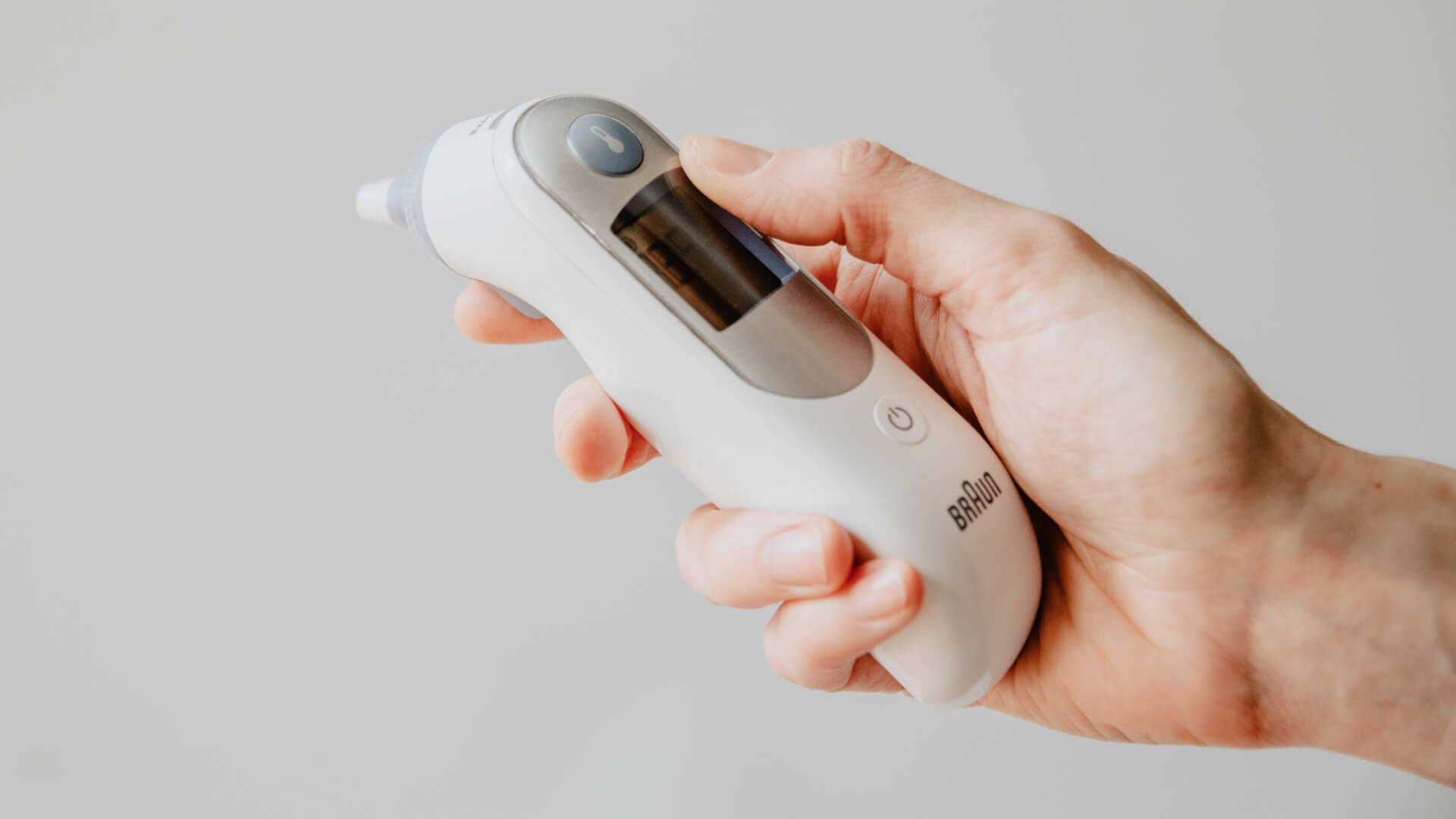10 August 2022 (updated: 10 August 2022)
Value-based Care is The Next Step for Healthcare — Interview with Cameron Carter, CEO at Rose
Chapters

We're talking with Rose's CEO, Cameron Carter about what's next for digital healthcare and how to integrate into the already existing healthcare system to innovate on top of it.
About Cameron Carter

Cameron has over 10 years in product operations and executive-level business development roles across three exited U.S. healthcare startups and at the largest U.S. kidney care provider. Recently, Cameron has started a new venture called Rose, a digital platform that connects home remodeling companies to households in need of accessible home modifications. Rose is addressing the in-home accessibility crisis in the U.S., as only 6% of all U.S. households are accessible.
Medical research has shown home modifications improve the physical and mental health of individuals, reduce medical spending for insurers, and improve clinical operations for hospitals. In-home accessibility challenges are a burgeoning healthcare issue. Research estimates in 2030, there will be over 85M U.S. citizens over 60 years of age. By 2035, one out of three households in the U.S. will include an individual at least 65 years of age.
Value-based care is the next step for healthcare — Interview with Cameron Carter
Patrycja Paterska: Last time we talked we were in the middle of the pandemic and the healthcare industry realizing the need for change. What are your predictions for the healthcare industry for 2022 and onward?
Cameron Carter: In 2022 and onward, I believe we will see three major shifts in the healthcare industry: the prioritization of cultural competency as an asset, increased adoption of value-based care (VBC) models across age groups, and the growth of healthcare delivered at home. In 2021, a lot of companies reassessed their short and long-term strategies in the wake of the pandemic. Companies have thought deeply about how patients and members are engaged, the right business models to scale, and the importance of where care is delivered.
Moving forward, I believe successful healthcare stakeholders will prioritize and quantify the holistic needs of the populations they serve and VBC models will be the tools to quantify the impact. Many organizations are shifting to delivering more types of services and care in the home for a number of reasons. To me, this is the start of a return to home based care, which is hyper-localized by nature and a leap forward in equitable care experiences for communities, many of which have been underserved for decades in the U.S. To be successful in home based care at scale, you have to understand the environment and community culture you’re operating in. Should we identify culture as an asset, we begin to design programs/initiatives tailored towards members not broad averages.
How would you explain value-based care in simple words for those who are unfamiliar with the term?
First, I appreciate the question because I feel like there’s significant misunderstanding in the industry around this topic. VBC is a concept that says value in the healthcare industry is generated through cost management AND health outcomes. You can visualize VBC as a ratio: value equals health outcomes (numerator) over a patient’s costs (denominator).
So, in simpler words, if you can improve the health outcomes of a patient while maintaining the cost — that’s value added within the system. If you can improve the health of an individual patient while reducing the cost associated with the services, you also create value in the system.
But there’s also another dimension to VBC. The rapidly aging demographic in the U.S. and western countries poses a challenge to this path forward. The built environment, technology, and care solutions rarely account for the holistic needs of an aging demographic. When you look at countries like Japan and Australia, a social safety net that accounts for whole-person help is evident. Homes and physical spaces are more accessible, patient care is tailored towards the individual’s needs and not just a broad rule, and social programs are marketed better. Additionally, independence is prioritized for this population. This approach improves the equity and efficacy of the care that’s delivered, resulting in improved metrics of success for stakeholders in the industry.
 Source: Unsplash
Source: Unsplash
How realistic is this scenario? How do you convince the government bodies it’s the right choice? The private sector is trying to innovate the system, but there is still a major disconnect between the two, so it’s not exactly easy to imagine it working seamlessly.
The healthcare industry is a difficult industry to innovate within. It’s a heavily regulated industry, trenched with legacy policies and tools that do have immense value but do need modernization. How realistic is the transition or the predictions I’ve made, I’m optimistic. The reasoning is around the rampant costs generated by healthcare. For example, the U.S. will spend $90Bn on medical expenditure by 2025 for healthcare for its veterans and servicemen/women. In the U.S. medical debt is the number one reason for bankruptcy for U.S. citizens. The system needs improvements in cost containment. We can lament poor results around health outcomes, but in short the U.S. has a ways to go compared to European countries.
Where governments can play a leading role is this effort to evolve is through microsimulations of alternative payments, piloting care delivery solutions, and trainings for healthcare stakeholders. You see this in the U.S. through programs like the Kidney Care Choices (KCC) Model, Germany’s transformation into digital health, and Japan’s Agetech market expansion. Clinical innovation and digitization of care are here, but it is not evenly distributed. We know these are needed and that is a clear opportunity for the government to contribute to the improved quality of life for their citizens. There will need to be better public private partnerships, and models like the NHS Innovation Accelerator in England and Switzerland Global Enterprise show blueprints for such a future.
Another important question is how do we digitize whole supply chains and not just bits of it as it happens now?
There is a crawl before you run the concept that is needed here. It’s important that we appreciate the need to digitize legacy unstructured (e.g., paperwork, archived files, etc.) data while the digitization of supply chains occurs.
Optimizing these supply chains is important, but ensuring they are built and supported from the best data sources is critical. In highly regulated industries, experimentation and aligned objectives are a precursor for success too.
There’s significant progress in patient and physician engagement tools, post-acute remote patient monitoring, and other experiences that provide a view into successful initiatives of digital supply chains. Prescription delivery and medication adherence is the furthest along in my opinion to a fully digitized supply chain that demonstrates scalable learnings for other aspects within the healthcare value chain.
What can we do about it?
I’m a huge proponent of collaboration and continuous learning. There is a huge role for learning through the globalized economy we live in today. Though specialist physicians learn from one another through academic journals and conferences, I believe there’s an opportunity for that same knowledge exchange for healthcare business leaders, administrators, and service providers. Lessons learned from Germany’s progressive attempt to digitize their health information to drive better clinical decisions, business innovation, and quality of life improvements at scale have value globally. However, many barely even know this effort is ongoing. I can think of states in the U.S., provinces in Canada, territories across the E.U. who would benefit from learning what worked and didn’t in Germany as they design their strategies for their population. We have to break down the knowledge silos in global health, this is something that was apparent during the pandemic that we need to carry into 2022 and beyond.
 Source: Unsplash
Source: Unsplash
And now that we have a bear market, investors are less willing to fund rough ideas.
Not quite. It is clear post-money valuations have seen a correction, but the corrections have been aligned to core fundamentals of the business vs. market trends. Some would say the frothiness of the market is being removed. That said, for early stage companies this is a great time to lean in and build the future. The corrections allow for earlier companies to build products for a changing future and have a business model built with the right fundamentals from the outset. If we look back to the last major U.S. Bear Market or global recession, some of the more important companies today were founded during that time: Uber, AirBnB, Pinterest, etc. As we say in the U.S., it takes 10 years to be an overnight success. My advice to entrepreneurs is to keep building, have conviction on your vision, and be flexible and patient in how your company gets there.
Let’s talk about your company, Rose. How does it fit into all of this?
Rose is a platform that seeks to transform home healthcare. Rose connects independent home remodeling companies to households in need of accessible home modifications: widening doorways, installing stair lifts/walk-in showers, etc. This transformation is oriented to the ideology that physical space is care and is rarely appreciated nor included in the care continuum of an individual. My cofounder Joseph Akoni and I began researching the opportunity deeply after both of us had family members in need of home modifications to allow themselves to safely live in their homes. However, the experience and infrastructure to make that a reality is wanting. We believe home modifications are a preventative form of healthcare that is not distributed equitably due to a lack of market awareness, difficulties with affordability, and limited service provider support. Though there are home improvement sites across the world like Angi’s (U.S.), Travaux (France), MyHammer (Germany), Houzz (U.S.) these platforms are not integrated, financially aligned, nor built to support their country’s healthcare ecosystem and stakeholders. Rose differentiates itself by integrating into the healthcare ecosystem.
How does Rose integrate into the system?
Rose integrates in multiple ways. We serve general contractors/builders by simplifying their ability to be paid by health insurers and individuals. We support households and individuals by enabling them to find public and private funds to purchase/subsidize home modifications, in addition facilitating multiple self-service payment options. Lastly, our user friendly design assists clinical stakeholders to include Rose into their clinical workflows, specifically discharging patients and care coordination.
And you’ve already mentioned we have a rapidly aging population globally. The pandemic also influenced how much time we spend at home.
The home improvement market is already massive, it’s just not the sexy topic to bring to the national attention. In the U.S. alone, homeowners 55 years of age and older spent $140Bn on home improvement projects in 2019. The only category they spent more on was food. The global home improvement market is gaining significant traction owing to the rising disposable income along with rapid urbanization. Research estimates the global home improvement market to be $333Bn in 2021, trending towards over $1Tr by 2030.
We spent 2/3 of our time in our homes and that was before the pandemic. So, if you’re not accounting for the physical space as a part of your care, you’re actually missing a massive social detriment of your health. Whether you live in a country with universal care or the system we have in the U.S., your home impacts your health outcomes directly and indirectly. As the western world ages rapidly (e.g., nearly 30% of Europe will be 60 years or older in 2030), the need to prioritize retrofitting homes and physical spaces will be key to healthcare outcomes for communities and their financial security.
See also
- Digital Health Adoption Is Our Biggest Challenge Globally. Interview with Cameron Carter — We sat down (virtually) with Bright Health's Cameron Carter to talk all things digital health. The telehealth potential, the gaps of today's healthcare, and the future.
You may also like

Native vs Cross-Platform App Development: Which is Right for Your Business
3 September 2024 • Maria Pradiuszyk




